|
Wednesday, January 2 - "In the Footsteps of Sages and Mystics"
Morning, Zippori National Park, site of the town where Rabbi Judah ha Nasi and others started to put together the Mishnah and create what we now know as rabbinic Judaism. Zippori was a town with a mixed population of Roman and local pagans as well as Christians and Jews and so, in addition to having a Jewish quarter with a synagogue and homes with mikvahs, there are also homes with banquet halls of typical Roman design, and a theatre. Lots of decorative mosaic floors have survived, and some of the main Roman streets, complete with wheel-rutted paving stones.
Lunch in Tzvat, followed by shopping in the mostly covered streets, with rain drumming on the plastic awnings overhead.
Visit to Kfar Vradim congregation, led by the long-ago friend of one of the members of our group. We met with them in an art gallery and heard about their ongoing efforts to serve their community, including building ties of friendship and cooperation with the nearby Druse village.
Dinner at Laguna restaurant in Tiberius. It took a long time to receive our bills, but this gave Jonah an opportunity to wander over to the café across the street, which was full of young Birthright tourists, and entertain himself and them with some energetic dancing. We ended the evening with a brief walk along the boardwalk by the Kinneret. Overnight at Kibbutz Lavi Hotel.
Thursday, January 3 (Unofficial theme: "Shame on the British!")
Morning, tour of Atlit, a detention camp run by the British south of Haifa. During the 30s and throughout WWII, when Jews were desperately trying to flee Europe and the Nazis, Britain didn't want too many of them entering Palestine and so intercepted all they could catch, held them at Atlit for weeks or months as the massive bureaucracy of the British Empire slowly considered each refugee's case, then deported most of them, some back to Europe (into Nazi hands) and others to places such as Cyprus.
Lunch at Natke's, a tiny truck stop near Akko. Possibly the best combination of tasty food for good value of the trip!
Afternoon, gaped at the amazing mosaics in the Hor HaTorah Tunisian synagogue and listened to one its founders, Zion, go on at length about its history, with Shari giving us an abbreviated interpretation of his lecture. Then we visited the Akko prison, another location where the British enforced their power during the Mandate years. The British prison occupied what had been an Ottoman Turk fortress, which in turn had been built on top of the ruins of a Crusader fortress....a perfect example of how so many places in Israel are a historical layer cake, with each group of people who conquers the land building its towns and temples and strongholds on top of the ruins of the civilization they just vanquished. Our last stop was the old Turkish baths, which closed at the end of British rule in 1948 and are now a museum.
Dinner at Kibbutz Lavi, followed by a summing-up session in Rabbi Allen's room, and our last overnight stay at the Lavi Hotel.
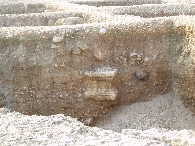 |
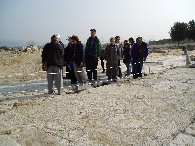 |

|
|
Ongoing excavation at Zippori |
Recently uncovered
mosaic floor |
One of the town's main roads |
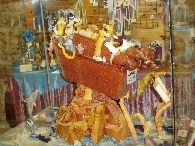 |
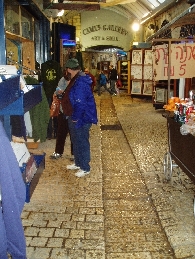 |
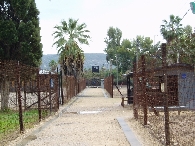
|
|
Whimsical creation at candlemaker's shop, Tzfat |
Part of medieval Tzfat, market lane, with rain flowing down center gutter |
Former British detention camp at Atlit |
 |
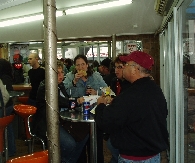 |
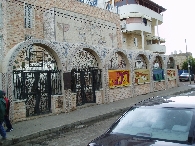
|
|
Tiny "Natke Burger" sold falafel, schwarma, chicken... |
...hot dogs, and vegetarian sandwiches for 7.99 shekels = about $2.50! |
Entrance to Tunisian synagogue in Akko (Acre) |
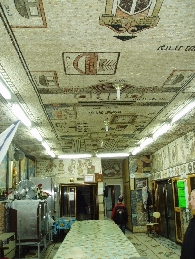 |
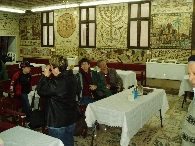 |
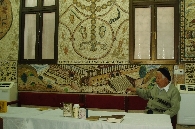 |
|
Mosaics cover every available flat surface... |
...walls, ceilings, floors;
here, the study hall |
Zion describes mosaic of the Second Temple; area shown is SW corner, now Davidson Archeological Park, where we were on Dec. 27 |
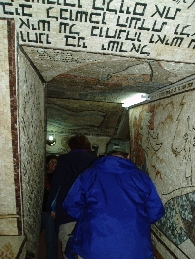 |
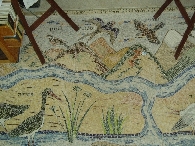 |
 |
|
Mosaics everywhere, even ceiling in stairwell |
Many of the mosaic scenes show plant and animal life native to Israel |
Crusader level beneath Turkish and British fortifications |
 |
|
All of the Crusader buildings were filled with dirt and rubble before archeologists began uncovering them |
Photos of January 4-6
|